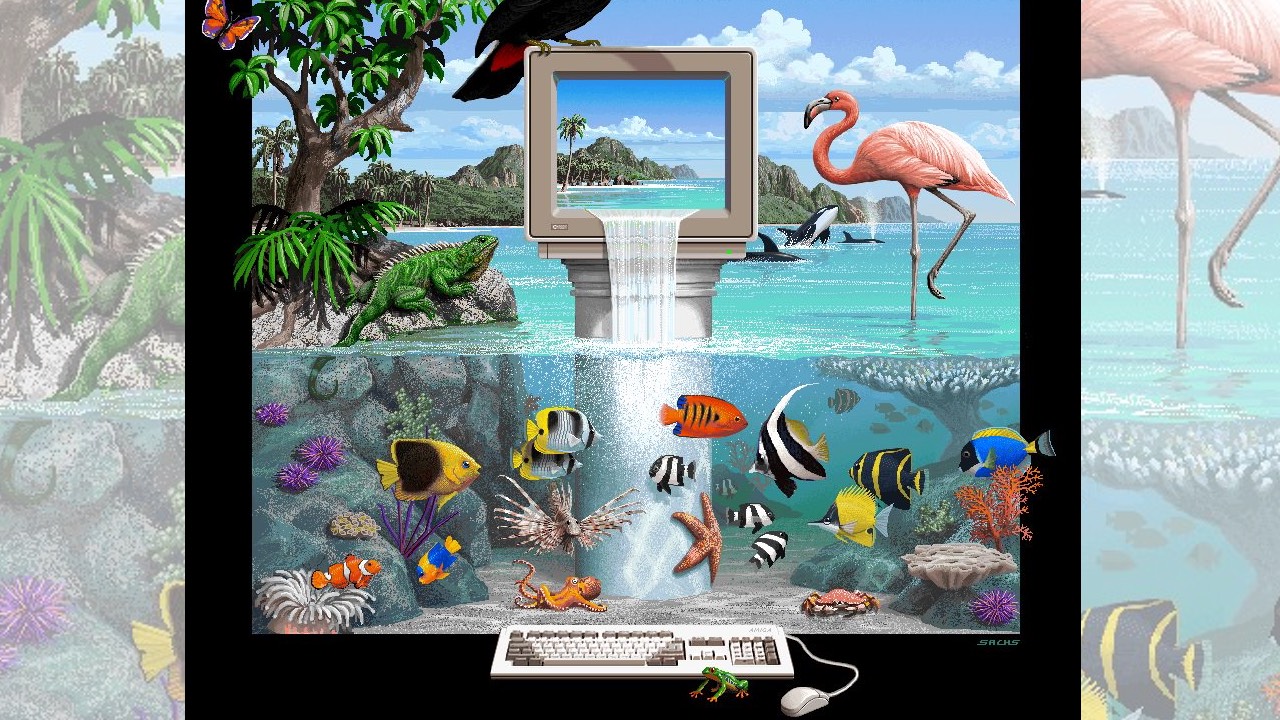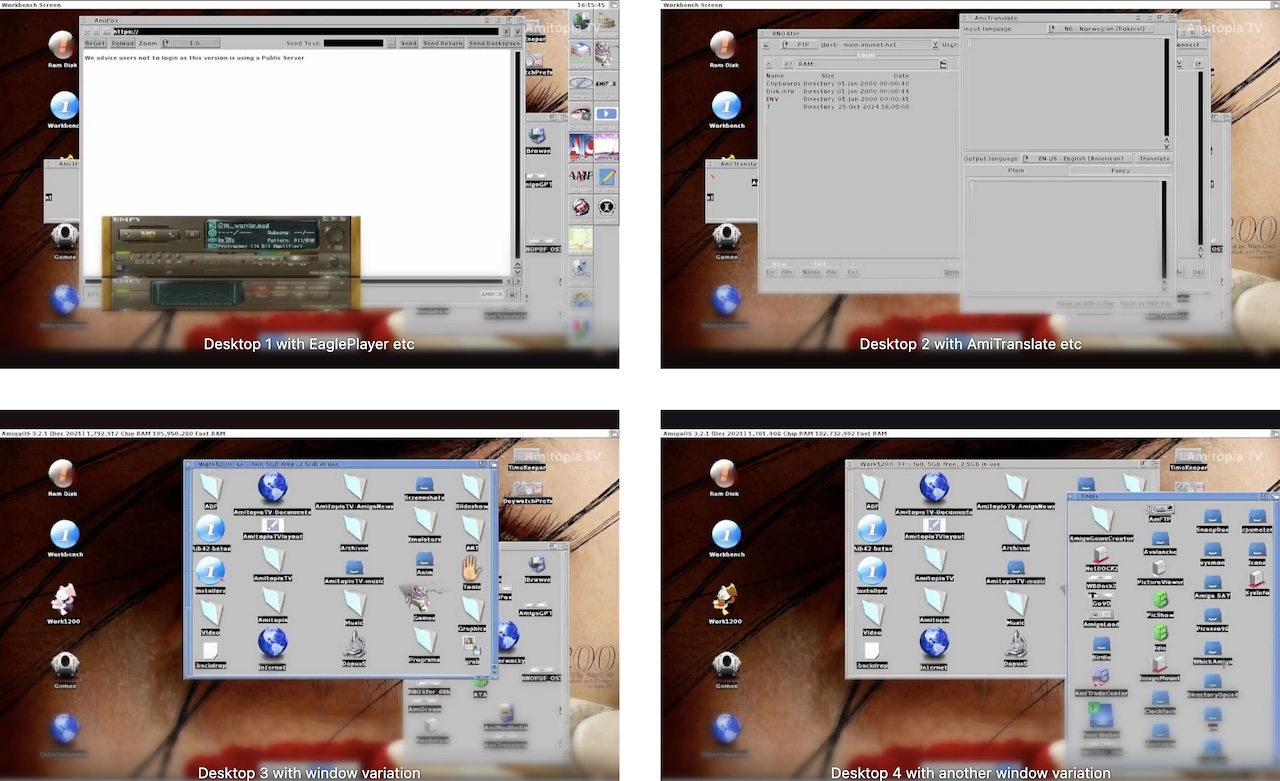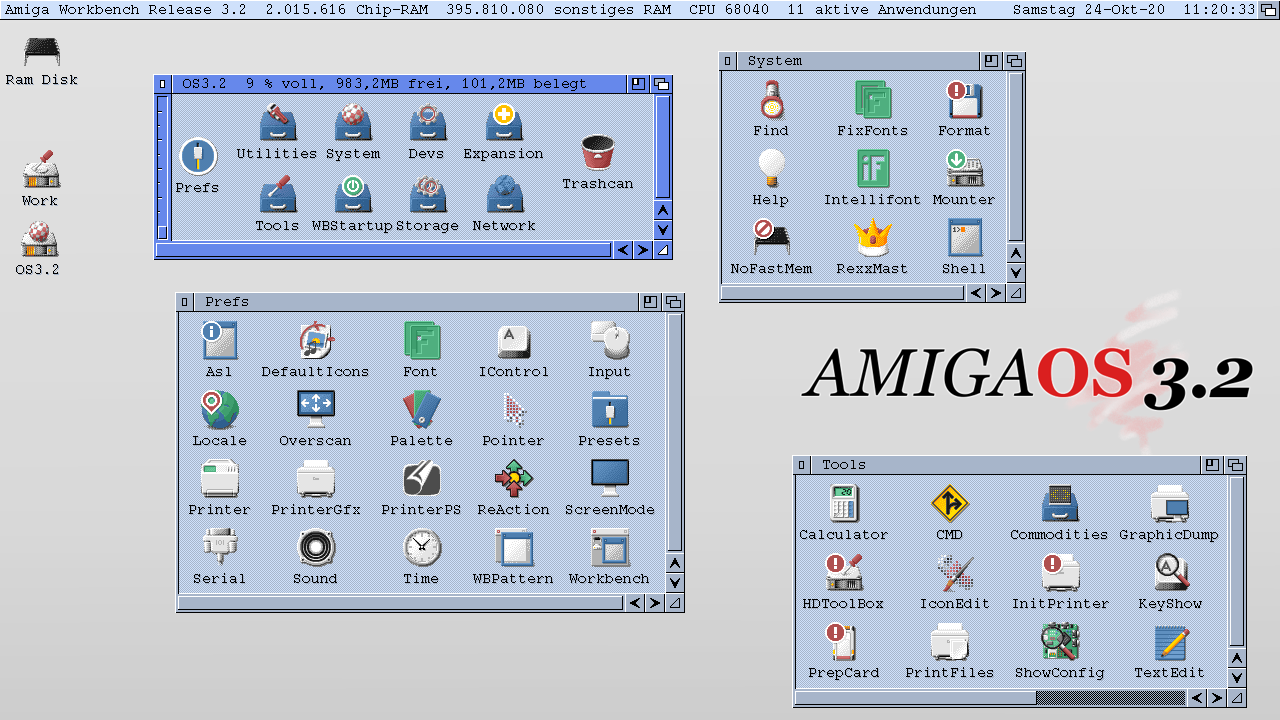Before the demise of Commodore. There were AA3000 and Amiga 3000+ with AGA that also included a DSP chip. It is the only Amigas with a DSP chip installed. It is an AT&T DSP3210 and was ahead of its time!
…” In late 1990, Jeff Porter and I took a trip out to AT&T in Bethlehem, PA. They had this new DSP chip, the AT&T DSP3210, that they were selling as a replacement for a whole board of electronics. We didn’t want it for that — we wanted it for a general-purpose signal computing engine. They had an OS, called VCOS/VCAS, which was kind of a perfect match to interface to AmigaOS, which would have allowed multitasking of DSP work, something you didn’t get with the typical DSP of the day. The DSP3210 could do some floating-point operations (single precision only) ten times faster than the 68040. So anyway, the A3000+ had this chip — which lived in the system as a bus master, sharing all of memory with the CPU slot processor — and as well, two audio CODECs. One was for modem projects, a lower bitrate mono CODEC with phase correction, and the other was a 16-bit, CD-quality audio CODEC, for high-quality audio I/O… the DSP would have been able to give us at least eight channels of playback at full CD quality.”
“You can see quite a bit of support circuitry for the DSP in the upper lefthand corner of this board. There was an audio CODEC here, designed to allow 16-bit, 2-channel recording, and playback. This was very cutting edge at the time, such chips, common today, were just becoming available. In addition, there was a separate mono CODEC with hardware phase correction, which supported modem protocols up to V32. The actual DSP was located above and to the right of the CPU.”
This quote is taken from big book of amiga hardware made by Dave Haynie as I had to find related info to the new DSP 3210 drivers that I just found on Aminet. I must admit that my knowledge of the Amiga 3000+ is not too big. It is one of the rarities that was also named AA3000.
If Commodore survived. Amiga would be a so much more badass computer. With DSP 3210 as standard in any Amiga, the machines would sweap a multimedia market that went so much down in June 1994.
Amiga 3000+ had the Pandora chipset
“The Amiga 3000+ was the first computer based on the Pandora chipset (which was later dubbed AA, then AGA). Revision 0 of this system first booted successfully in February of 1991, thanks due to a chip revision that got the display logic actually working. This is revision 1, which completed the audio subsystem, and moved to surface-mount components.”
As the name suggests, this system was being designed as a drop-in replacement for the existing Amiga 3000 motherboard. In addition to the features everyone knows from the Amiga 3000, and from later computers such as the Amiga 4000, the Amiga 3000+ sported the AT&T DSP3210 digital signal processor as a coprocessor.
Note: this is the real Amiga 3000+, very rare. Most of the Amiga 3000+ type systems out, whether boards or whole computers, are actually the scaled-down “AA3000”, which was after the A3000+ had been canceled, by the Bill Sydnes administration, as a product.”
What was Commodore thinking? What if Commodore could have been leading the multimedia computing age? They could. They had all the possibilities to rise. But nothing was done.





